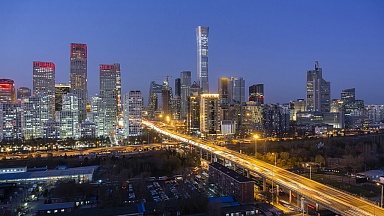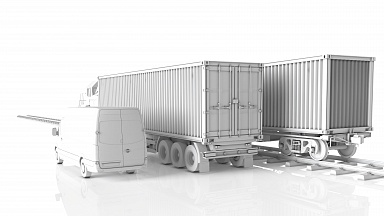The number of China-Europe freight trains is expected to surge on the back of China’s optimized epidemic response and the shopping season of Christmas in Western countries, and some Chinese companies are actively booking containers for Europe-bound exports, industry insiders said on Tuesday.
«While the booking for containers of China-Europe freight trains starting from Changsha [Central China’s Hunan Province] dropped slightly month-on-month in November, we have seen a sound growth momentum since December,» Lu Yinghuai, director of the Hunan Shipping Agent Association, told the Global Times on Tuesday.
Lu projected that there may be a surge in the number of China-Europe freight trains at the end of 2022, thanks to favorable factors such as the Christmas holidays and Chinese businesses focusing on overseas markets amid the optimization of COVID-19 response measures.
«Currently, many small and medium-sized enterprises in Hunan have been actively booking containers, and most of the commodities for export are machinery components, consumer electronics, new-energy vehicle components and light industrial products,» he said.
Yu Zhengdong, manager of Chen’ge Daily Supplies in Yiwu, East China’s Zhejiang Province, told the Global Times on Tuesday that his company is planning to ship a dozen containers via the China-Europe freight trains and ocean shipping, as the total amount of overseas orders has increased by around 30 percent.
Yu’s company mainly exports textile products which are sold to more than 40 countries and regions including the US and the EU.
«China’s continuous optimization of epidemic responses makes us more confident to reach deals with foreign clients, as we’re able to nail down delivery date and control production costs due to smooth logistics,» Yu said, noting that the company is actively making efforts to secure more face-to-face exchanges with foreign clients in 2023.
Given the stability and efficiency of the China-Europe freight trains, Yu said that he is optimistic about the company’s shipment volume next year.
Stable global supply chain
As an irreplaceable link in the global industrial and supply chain, China has stepped up efforts to strengthen international cooperation to ensure a safe and stable international supply chain over the first 11 months of 2022, while strictly implementing anti-COVID19 measures at ports.
According to data from China Railway, a total of 15,162 China-Europe freight trains ran between January and November, transporting 1.48 million standard containers of commodities, up 10 percent and 11 percent year-on-year, respectively. In addition, the New International Land-Sea Trade Corridor trains facilitated 687,000 standard containers over the period, up 18.9 percent year-on-year.
The number of China-Europe freight train trips has increased rapidly in recent years, helping stabilize the international supply chain, according to a report on the development of the China-Europe Express Trains the National Development and Reform Commission released on December 1.
From 2016 to 2021, the number of China-Europe freight trains increased by an annual growth of 55 percent, with annual freight volume increasing nine-fold. As of the end of October this year, 82 China-Europe freight train routes had been launched reaching 204 cities in 24 European countries, it said.
Amid growing uncertainties and challenges such as geopolitical tension and an unfolding energy crisis in the EU, Chinese companies are playing a larger role in bolstering the global supply chain.
For example, Shenzhen Topray Solar Co recently said during exchanges with investors via Shenzhen Stock Exchange that the company has obtained some solar orders from European clients amid fast growth of the market, and the executives of the company remain optimistic about the company’s development in the EU.
Chinese compressor manufacturer Fujian Snowman Co said that the amount of online and offline enquiries from the European markets for the company’s air force heat pump has increased, with the company’s production capacity able to meet market demand.
In addition, Chinese local governments including East China’s Jiangsu, Zhejiang, Southwest China’s Sichuan, South China’s Guangdong provinces have organized business groups to fly overseas to win new orders.
Resilient foreign trade
China’s foreign trade staged strong growth of 8.6 percent on a yearly basis in the first 11 months, with the exports up by 11.9 percent year-on-year to 21.84 trillion yuan ($3.13 trillion), the latest data from the General Administration of Customs showed.
Despite the resilience of China’s foreign trade sector, there are still challenges ahead for 2023, according to Bai Ming, deputy director of the international market research institute at the Chinese Academy of International Trade and Economic Cooperation, suggesting stabilizing foreign trade in three aspects.
«We should continue to cement the industrial base of the country’s foreign trade development and find new export products that China enjoys advantage, such as new-energy vehicles, accelerate the development of new trade modes like cross-border e-commerce and make good use of opportunities brought about by free trade agreements, especially the Regional Comprehensive Economic Partnership,» he said.




